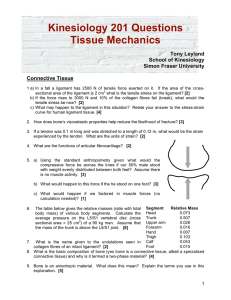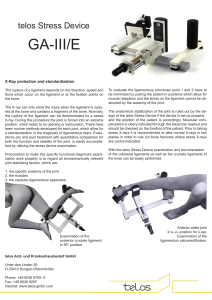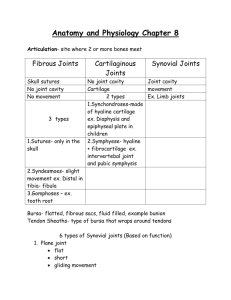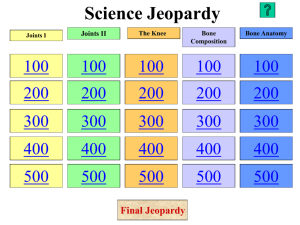KINESIOLOGY
advertisement
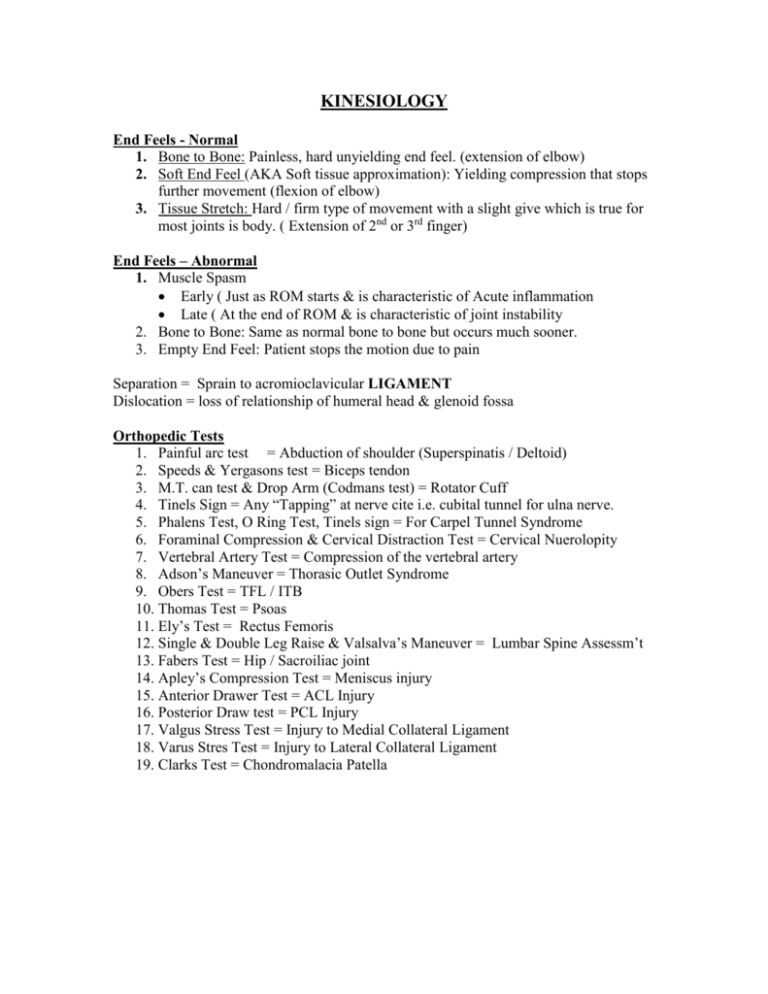
KINESIOLOGY End Feels - Normal 1. Bone to Bone: Painless, hard unyielding end feel. (extension of elbow) 2. Soft End Feel (AKA Soft tissue approximation): Yielding compression that stops further movement (flexion of elbow) 3. Tissue Stretch: Hard / firm type of movement with a slight give which is true for most joints is body. ( Extension of 2nd or 3rd finger) End Feels – Abnormal 1. Muscle Spasm Early ( Just as ROM starts & is characteristic of Acute inflammation Late ( At the end of ROM & is characteristic of joint instability 2. Bone to Bone: Same as normal bone to bone but occurs much sooner. 3. Empty End Feel: Patient stops the motion due to pain Separation = Sprain to acromioclavicular LIGAMENT Dislocation = loss of relationship of humeral head & glenoid fossa Orthopedic Tests 1. Painful arc test = Abduction of shoulder (Superspinatis / Deltoid) 2. Speeds & Yergasons test = Biceps tendon 3. M.T. can test & Drop Arm (Codmans test) = Rotator Cuff 4. Tinels Sign = Any “Tapping” at nerve cite i.e. cubital tunnel for ulna nerve. 5. Phalens Test, O Ring Test, Tinels sign = For Carpel Tunnel Syndrome 6. Foraminal Compression & Cervical Distraction Test = Cervical Nuerolopity 7. Vertebral Artery Test = Compression of the vertebral artery 8. Adson’s Maneuver = Thorasic Outlet Syndrome 9. Obers Test = TFL / ITB 10. Thomas Test = Psoas 11. Ely’s Test = Rectus Femoris 12. Single & Double Leg Raise & Valsalva’s Maneuver = Lumbar Spine Assessm’t 13. Fabers Test = Hip / Sacroiliac joint 14. Apley’s Compression Test = Meniscus injury 15. Anterior Drawer Test = ACL Injury 16. Posterior Draw test = PCL Injury 17. Valgus Stress Test = Injury to Medial Collateral Ligament 18. Varus Stres Test = Injury to Lateral Collateral Ligament 19. Clarks Test = Chondromalacia Patella



